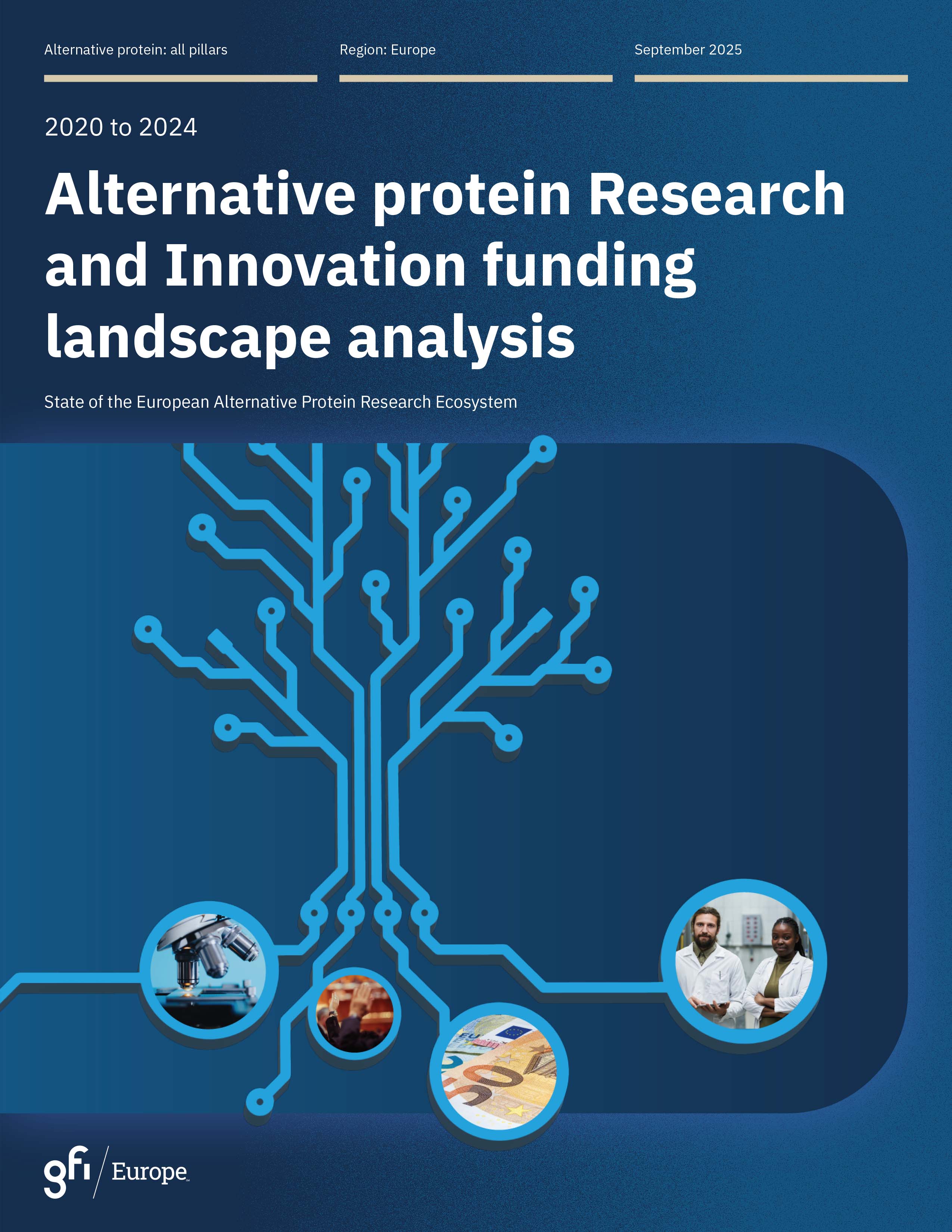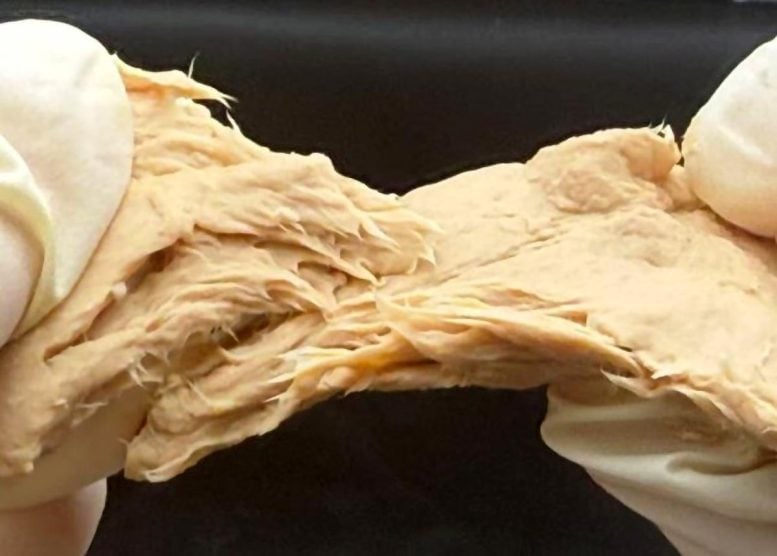

Europe’s public investment in alternative protein research surged 296% in four years, but funding still falls short of what’s needed, GFI Europe analysis found
Europe’s alternative protein research landscape entered a period of rapid expansion between 2020 and 2024, with public and nonprofit investment climbing from just over €80 million (US$87 million) in 2020 to more than €320 million (US$350 million) in 2024. The findings come from a new analysis published by the Good Food Institute Europe, which examined funding across plant-based, fermentation, cultivated, and cross-cutting research during the five-year period.
The report showed an average annual funding increase of 44%, marking seven consecutive years of growth and underscoring the pace at which alternative protein science has developed across the continent. The European Commission emerged as the single largest funding jurisdiction, allocating €308 million (US$337 million) since 2020, followed by the UK, Denmark, and the Netherlands.
Fermentation research experienced the fastest rise, growing 77% annually over the period, and becoming the best-funded pillar in 2024. While plant-based research remained the largest overall category, funding in that area stabilized rather than expanded in recent years. Cultivated meat research also increased, although with greater year-to-year volatility and a lower overall total of €92 million (US$101 million) since 2020.
GFI Europe said the surge in activity reflected both scientific momentum and the emergence of dedicated research hubs across the region. In 2024, major centers launched in the UK alone included the Bezos Centre for Sustainable Protein and the National Alternative Protein Innovation Centre, supported by UK Research and Innovation and international philanthropy. In Denmark, the BRIGHT biotechnology institute received €134 million (US$147 million), around one-third of which is earmarked for fermentation.
Despite the expansion, the analysis stressed that Europe remained far from the level of investment required for the sector to reach its full potential. A separate Global Innovation Needs Assessment estimated that Europe would need to invest an average of €760 million (US$830 million) per year until 2050 for alternative proteins to achieve meaningful contributions to climate mitigation and food security. Current public spending remains less than half of that benchmark.
The report highlighted geographic variation in research strength. Denmark, Norway, Sweden, and Finland significantly outperformed larger countries on a per capita basis, while Estonia and Poland ranked higher than Germany, France, and Spain when spending was measured relative to GDP. The Nordics collectively contributed more than €250 million (US$274 million) over the five-year period, driven by the Novo Nordisk Foundation and national research councils.
The UK saw the sharpest rise in 2024, with over €90 million (US$98 million) in new funding awarded that year alone. The country’s research ecosystem has become increasingly anchored by large-scale, multi-year programs such as CARMA, the Microbial Food Hub, and the Bezos Centre. According to the report, these hubs now account for more than half of all UK alternative protein R&I investment since 2020.

Across Europe, researchers showed a strong focus on upstream science. For cultivated meat, most funding went toward cell line development and cell culture media innovation. Fermentation funding increasingly targeted strain engineering, feedstocks, and bioprocess design. By contrast, downstream areas such as texturization methods, impact assessments, target molecule exploration, and food safety research remained comparatively underfunded. Only 7% of food safety research focused on fermentation, despite rapid growth in that pillar.
The analysis also underscored imbalances in end-product research. Two-thirds of grants did not specify a final application, reflecting the early-stage nature of ingredient and process development. Where end-products were identified, the majority targeted meat analogues, followed by dairy. Very little research funding went toward seafood, eggs, yoghurt, spreads, or cream alternatives, despite market opportunities in these categories.
The authors emphasized that public investment remained essential for de-risking technologies, supporting open-access knowledge, and encouraging private capital to follow. Funded projects also helped smaller countries build scientific capacity in areas that might otherwise be overlooked. In Italy and Ireland, for example, European Commission programmes played a prominent role in sustaining sizable research communities despite limited national-level funding.
While the overall trend is positive, the report concluded that a step change in funding will be required to sustain growth, address technical hurdles, and maintain Europe’s competitiveness with regions such as Asia, where public R&I spending has expanded significantly. Europe’s share of global R&I investment fell from 24% in 2018 to 20.5% in 2023, reflecting broader concerns about underinvestment in innovation across the bloc.
The findings point to a research ecosystem that is maturing quickly but still held back by gaps in areas such as sensory optimization, environmental impact analysis, health and nutrition research, and downstream processing. With alternative proteins increasingly viewed as a critical component of climate and food resilience strategies, the analysis suggested that consistent, long-term funding will determine whether Europe can translate its scientific strengths into global leadership.
If you have any questions or would like to get in touch with us, please email info@futureofproteinproduction.com






